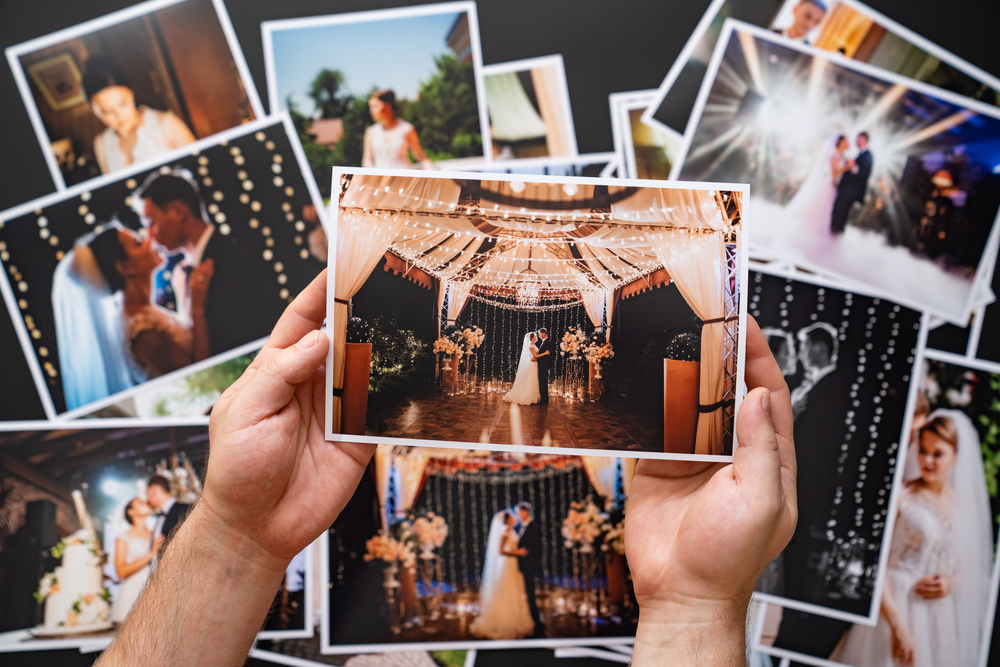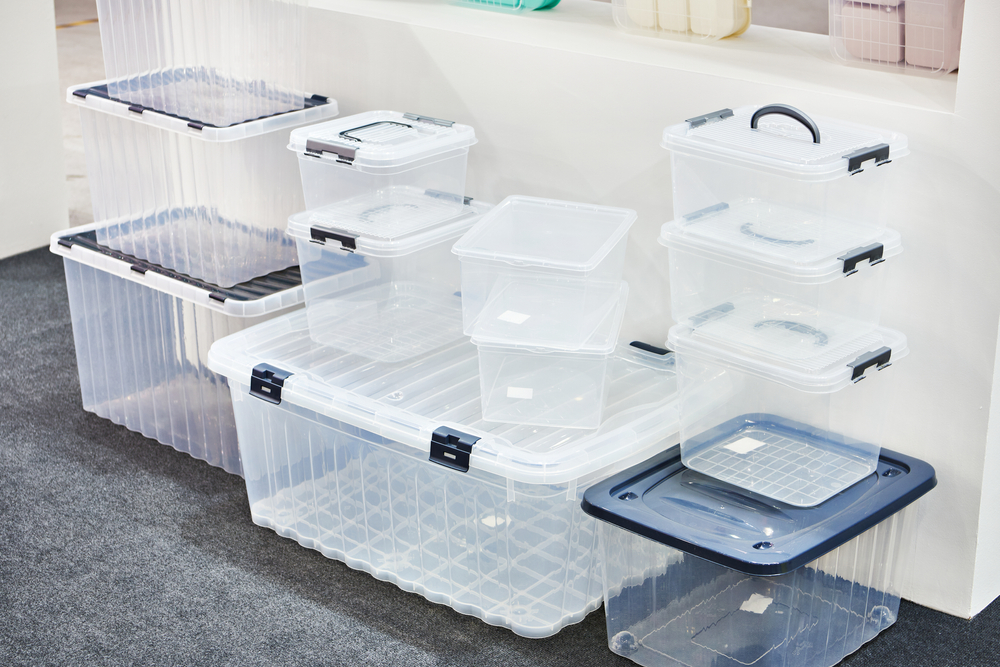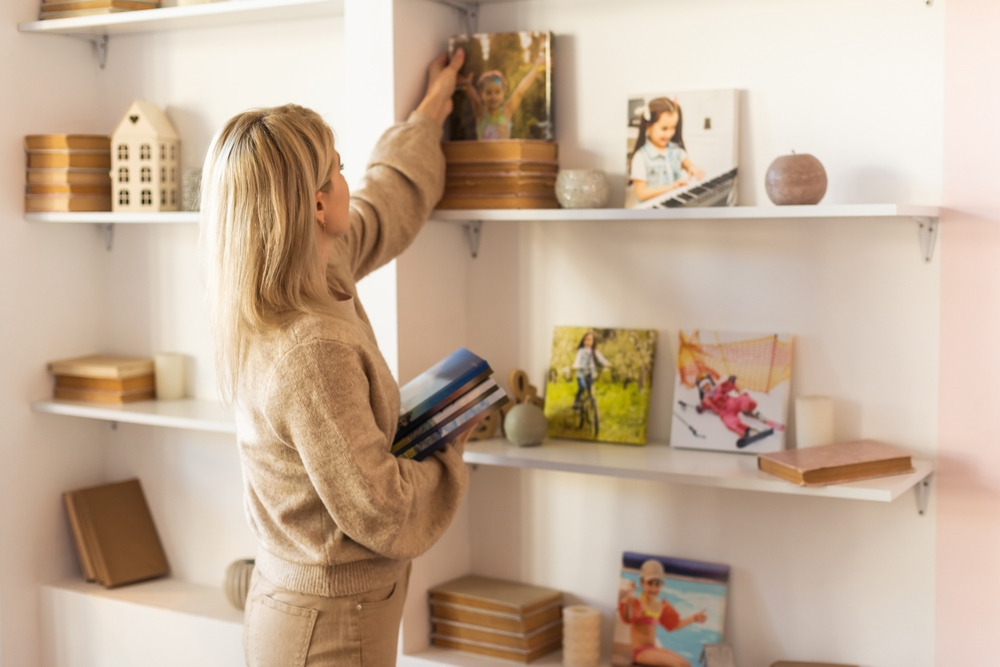
When it comes to your most treasured items, photographs are likely at the top of the list. More than just a piece of paper, photos are deeply cherished mementos. As such, photographs demand more planning and preparation when storing them long-term. The wrong choices could damage or even destroy your precious photographs while they’re in storage.
To help you prevent that disaster, the storage experts at Storage Solutions put together this list of the top nine tips for storing photos long-term. Read on to discover them all and empower yourself to store your photographs and photographic equipment like a pro!
9 Tips on Storing Photos Long-Term
1. First, Organize Your Photos

Some folks keep their photos highly organized right from the start. If you’re not that person and your photos are a big, scattered mess (no judgment), organizing them before packing them for long-term storage is necessary. Not only will this prevent damage while your photographs are stored, but also make it much easier for you to find them again when it’s time to take them back out of storage.
It’s highly recommended you use acid-free photo organizers, sleeves, or albums to prevent your photographs from sticking together and damaging each other while stored. You should also have a magic marker handy to note the photographs, years, subjects, etc., on every box or clear plastic bin that you fill with photographs and photo albums.
2. Use New, Clean Packing Supplies
Sometimes, it’s OK to use used packing materials like boxes, paper, etc. to pack things, especially toys, shoes, and other items that don’t particularly need to be well protected. Regarding your photographs, however, it’s best to pay the extra dough and purchase fresh, new packing supplies. That way, you won’t have to worry about moisture, stains, spilled food, and other gross stuff on the boxes you use to pack your precious memories.
3. Protect Photos in Acid-Free Albums and Photo Sleeves
Regular paper contains acid that can damage photographs. That’s why photography and storage experts recommend protecting your photos in acid-free albums, photo sleeves, and organizers. These products use acid-free paper that doesn’t damage photographs and keeps them in pristine condition.
4. Use Desiccant Packs to Prevent Moisture Damage
If you’ve purchased a new pair of sneakers in the last 20 years, you’ve seen a desiccant pack. These tiny packages contain silicone gel beads that absorb moisture and keep sneakers, shoes, and other items fresh. You can use them to prevent moisture from damaging your precious photographs by purchasing larger desiccant packs. (You’ll find them on Amazon and the usual retailers.) Carefully placing one or two desiccant packs in every box or plastic bin you use to store your photographs is a great choice.
5. Store Your Photos in Clear Plastic Bins

While packing your photographs in cardboard boxes is certainly a viable option, packing them in clear plastic bins is a better choice. Yes, bins cost more, but they offer several advantages over cardboard boxes.
The first is that plastic bins don’t absorb moisture like cardboard does. Also, it’s much more difficult for rodents to chew through a plastic container while they can easily chew through a cardboard box in mere minutes. However, one of the most significant advantages of clear plastic bins is that you can clearly see what’s inside. That makes it significantly more accessible (and faster) to find a particular photograph or photo album in your collection while in storage.
6. Don’t Stack Boxes of Photos Too High
Printed photographs are surprisingly heavy, especially if you have six or seven photo albums in a single box. The problem is this extreme weight can damage photographs if you stack the boxes too high. The weight can also damage the photo albums, crushing the spine and damaging the rings and other parts. That’s why it’s recommended to stack boxes of photographs at most 3 boxes high. More than that, and you risk damaging your photos, albums, and yourself should a stack of photo albums fall over.
7. Rent a Climate Controlled Storage Unit
We’ve mentioned that moisture should be avoided when storing photographs long-term. The best way to do that is to rent a climate controlled storage unit. These specialized storage units keep the temperature inside stable throughout the year, preventing extreme heat or cold. They also reduce humidity, thus moisture, helping to keep your photographs in pristine condition.
8. Use Shelving Units for Large Photograph Collections
If you have an extensive photograph collection, consider buying a shelving unit or two for your storage unit. A metal shelving unit, which you can buy at any big box home improvement store, should be able to hold at least 10 small (1.5 cubic feet) boxes of photos.
9. Create Digital Backups of Your Photos

This tip might not be feasible if you have a massive photo collection. However, if it is, creating digital backups of your photos is highly recommended. Not only will that give you a backup plan in case of a disaster, but digital photographs are significantly easier to carry, store, and travel with!
Keep Your Photographs in Pristine Condition with Storage Solution
At Storage Solutions, we realize the importance of your photographs to you, your family, and your friends. When you store your photographs with us, you can rest assured that they will be safe and secure and come out of storage in pristine condition.
Not sure what size storage unit you need to store your photographs? Check out our storage unit size guide for help. You can also store your photographic equipment and most other things in a storage unit. Our customers store the contents of their entire house or one room, items from their business, and even vehicles like cars and boats in our storage units. When ready, you can reserve a storage unit online in under five minutes with no deposit.